
To begin with we will take a look at how to read the music lines and spaces of the treble clef, especially useful if you play the guitar.
In order to identify the notes on the 5 staff Lines we must first decide on an clef. In this case this will be the Treble Clef

Now we can look/identify the names of the notes on the 5 lines of the treble clef.
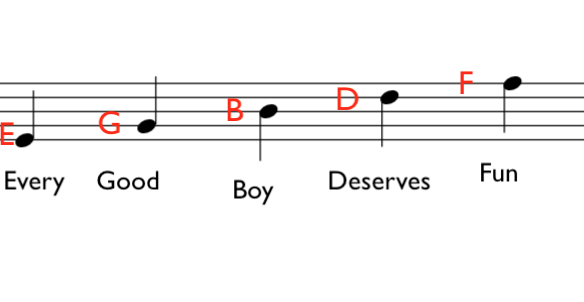
Next, we will look at the notes in the 4 spaces of the staff lines: F A C E

If we look at the notation below we will see the C major scale and the names of the different degrees of the scale in order.

We can now add thirds to the scale notes and notate the “Triads” of the C major scale

Although we will look at this in another video/blog we can clearly see the time signature. This is 4/4, meaning that there are 4 Quarter note beats to the bar.

One last thing to take into consideration is Key Signature. Again we will look at these in detail in the next video, but it is a good idea to be aware of them. They move in the cycle of 5ths. So a fifth up from C major is G major. This has an F# as the key signature. This means that every F note in the key is sharpened. Unless of course there is an natural sign.

So the key signature is for us to acknowledge that specific notes will be sharpened or flattened as we play our way through the music.
PART 2:APPLYING RHYTHMS
It’s a good idea to watch the video before or along with this part of the lesson as it will emphasise many of the key points.
In the notation diagram below you will see the Whole note called the “Semibreve” this is worth four beats or four 1/4 notes.
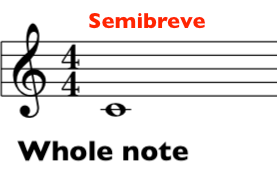
We will now cut this in half and have two “Minims” or two half notes per semibreve.

Now we will have four 1/4 notes called “Crotchets” per Semibreve

The next rhythmic division is the 1/8th note called a “Quaver”

They are more commonly grouped and counted like this

The doubling of the 1/8th note gives us the 16th note called a “Semiquaver”

Semiquavers [16ths] are more commonly seen and counted like this
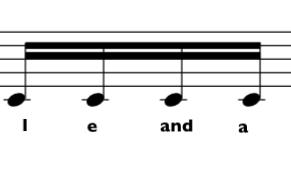

Lastly we will add “Triplets” to our Basic Rhythms. These are 3 notes played over one 1/4 note beat
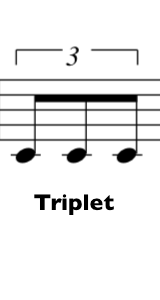
More commonly counted as:

When setting out to write down music we apply a “Time Signature” in order to acknowledge how many beats there are per bar.

Here we have “Three” 1/4 note beats per bar

Now we have ‘Six Eighth” notes per bar displayed by the 6/8 time signature

Now let’s apply this to the Scale that we learnt in the previous blog/video “How to read music part 1”
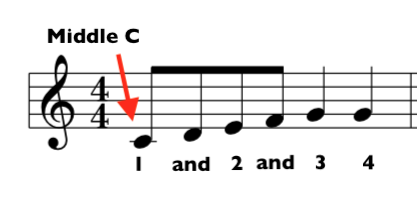
SYNCOPATION: Syncopated Common Rhythms
Some rhythms are tied as we see below: This makes them syncopated as we start “On” the beat and then accent the “Off-beat”.

The above rhythm is more commonly written like this:

SYNCOPATED RHYTHM NUMBER 2:
The other very common syncopated rhythm is this:
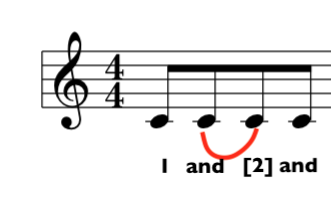
Again, notice the tied notes. This means that the 2nd “On” beat is not played but the “And” Off-Beat is played. It is more commonly written like this:

Now let’s apply these two common syncopated rhythms to our “Triads” from our previous blog/video lesson on how to read music
The first Rhythm with triad melody:

The second Rhythm with triad melody:

Okay, that’s the end of part 2 on “How to Read Music Rhythms and Notation”.
Thanks for viewing this webpage please SUBSCRIBE to us on youtube below!

